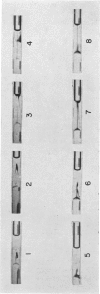Abstract
In many capillaries erythrocytes travel singly, separated by segments of plasma (bolus flow). The peculiar flow pattern, within the plasma, has been studied visually in a model in which air bubbles separated by short columns of liquid flow through a glass tube. Injection of dye reveals an “eddy-like” motion, in that each fluid element repeatedly describes a closed circuit. The possible significance of this “mixing motion” in relation to gaseous equilibration (e.g., in pulmonary capillaries) has been studied in a thermal analogue. A copper tube passed first through a constant temperature bath which brought the fluid to a uniform temperature T1, and then through a second smaller bath at a lower temperature T2. From the final temperature T3 of the fluid, which was collected in a thermally insulated flask, a calculation of the heat transfer was made (i.e., from the flow and the temperature drop (T1-T3)). Bolus flow was up to twice as effective in transferring heat as Poiseuille flow (no bubbles in fluid). The theory of modelling was employed in order to apply this thermal data to gaseous equilibration, especially in pulmonary capillaries. It was concluded that gaseous equilibration may be considerably accelerated by bolus flow, though this may be more of a limiting factor in peripheral capillaries than in the pulmonary circulation. The result supports the assumption of complete mixing in plasma made by Roughton and Forster in 1957.
Full text
PDF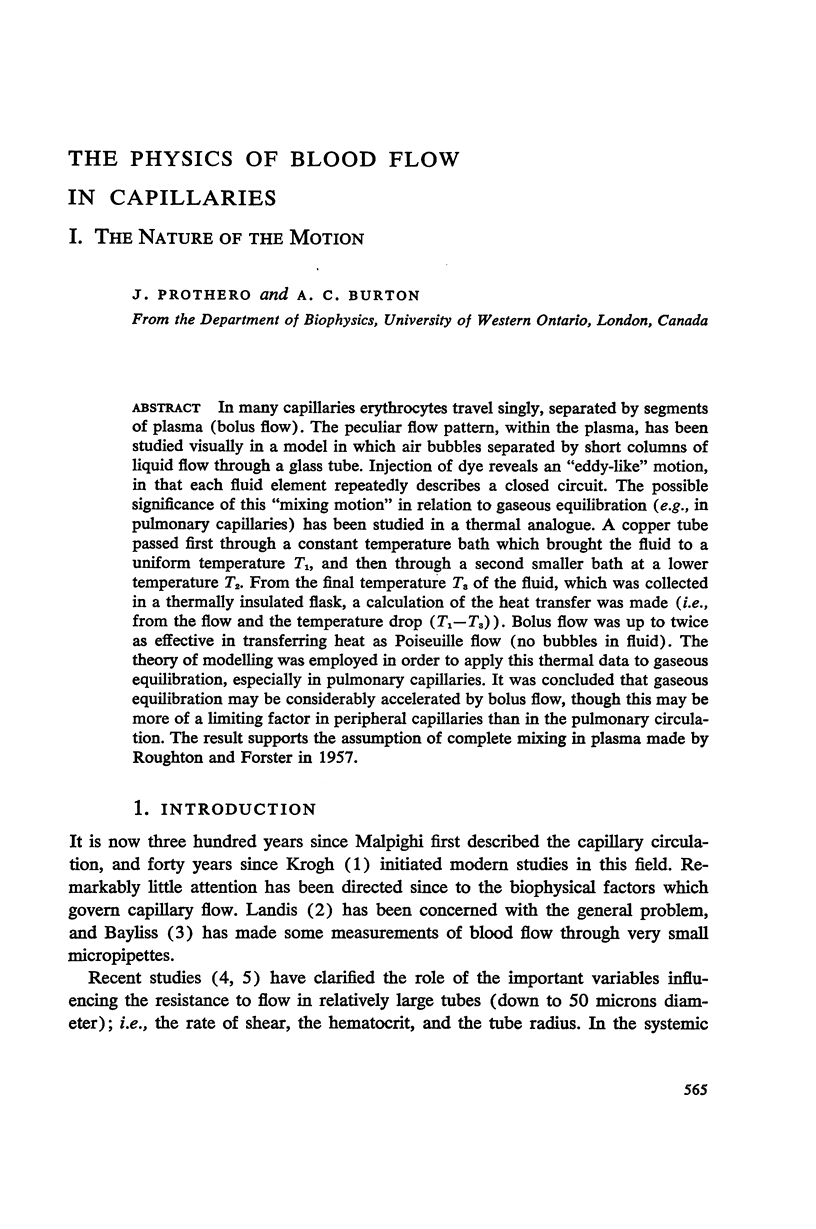
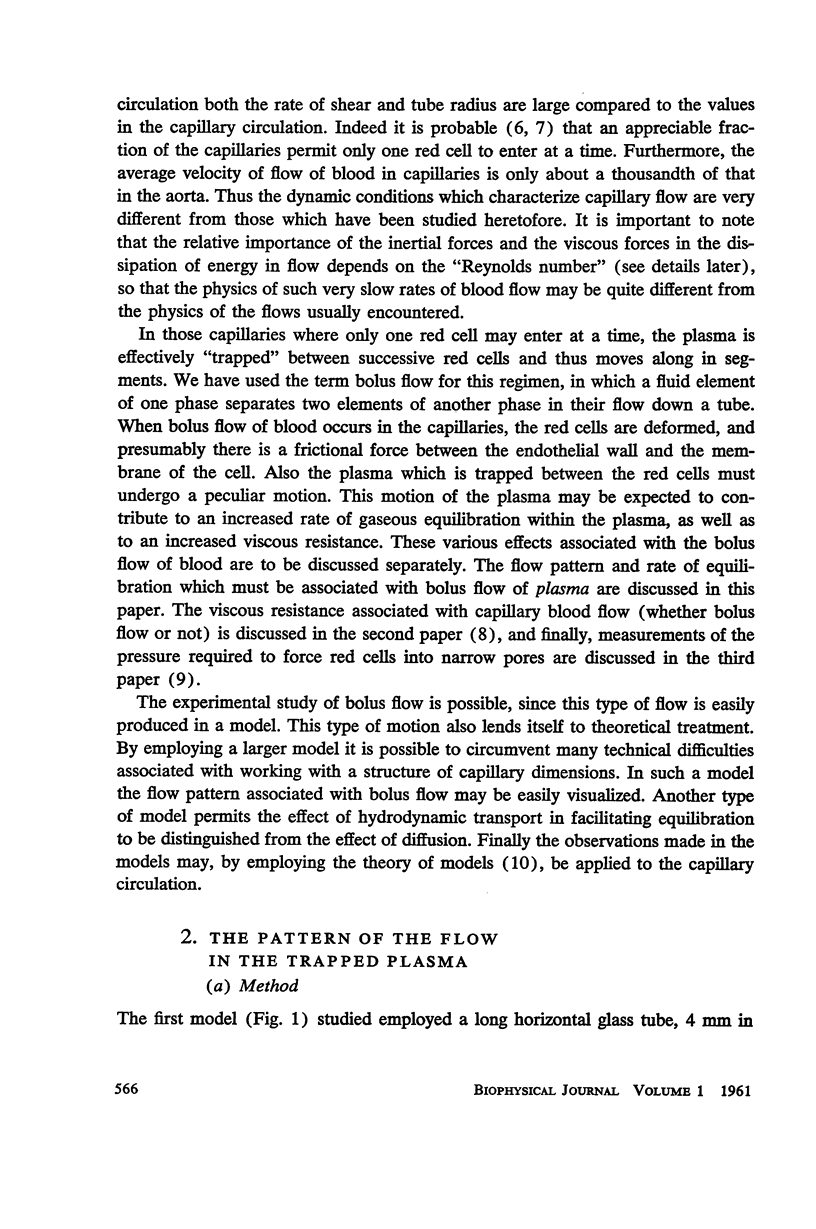

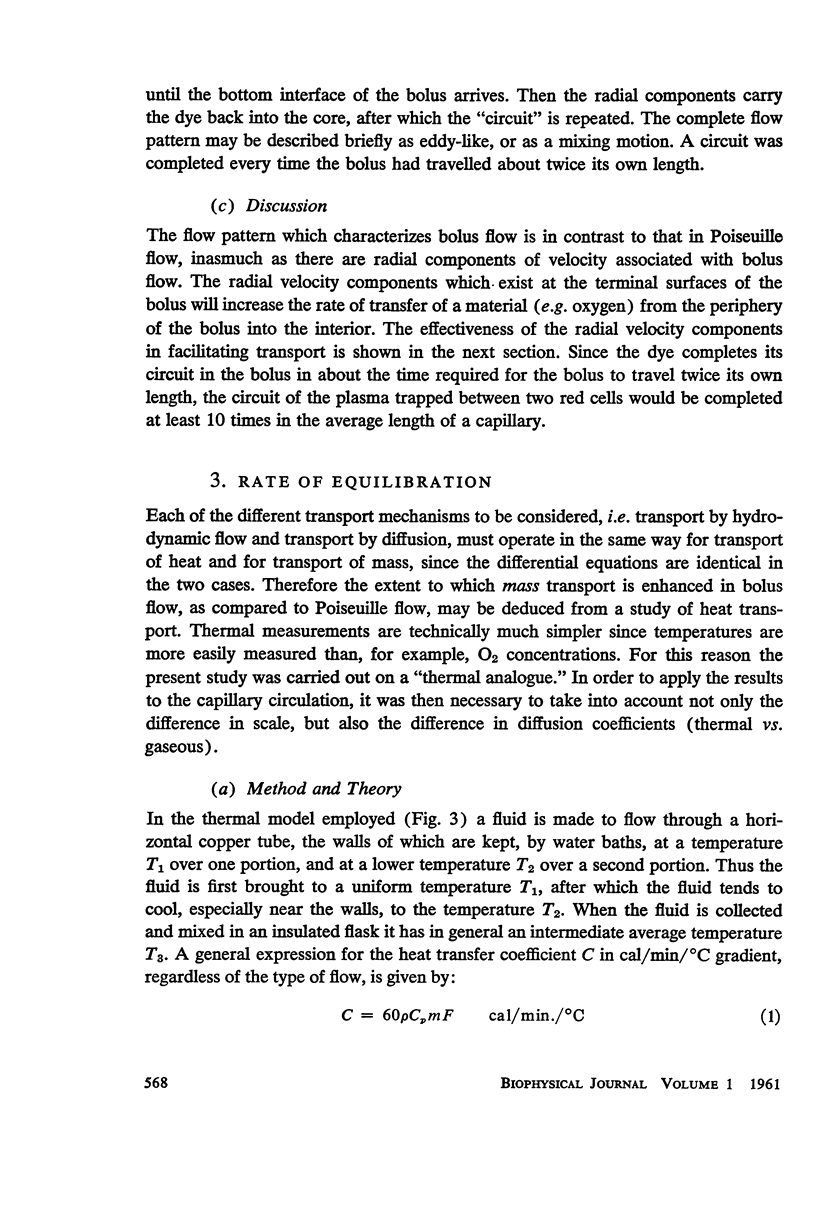
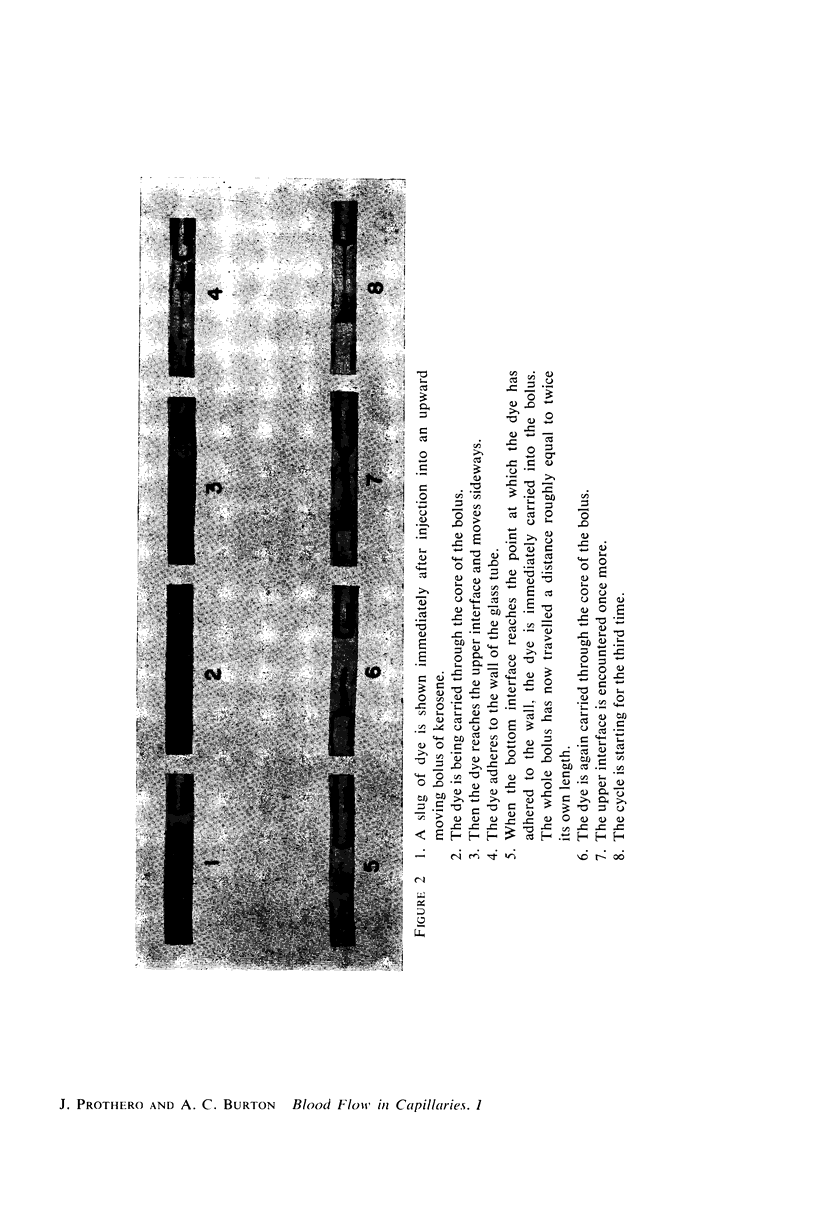
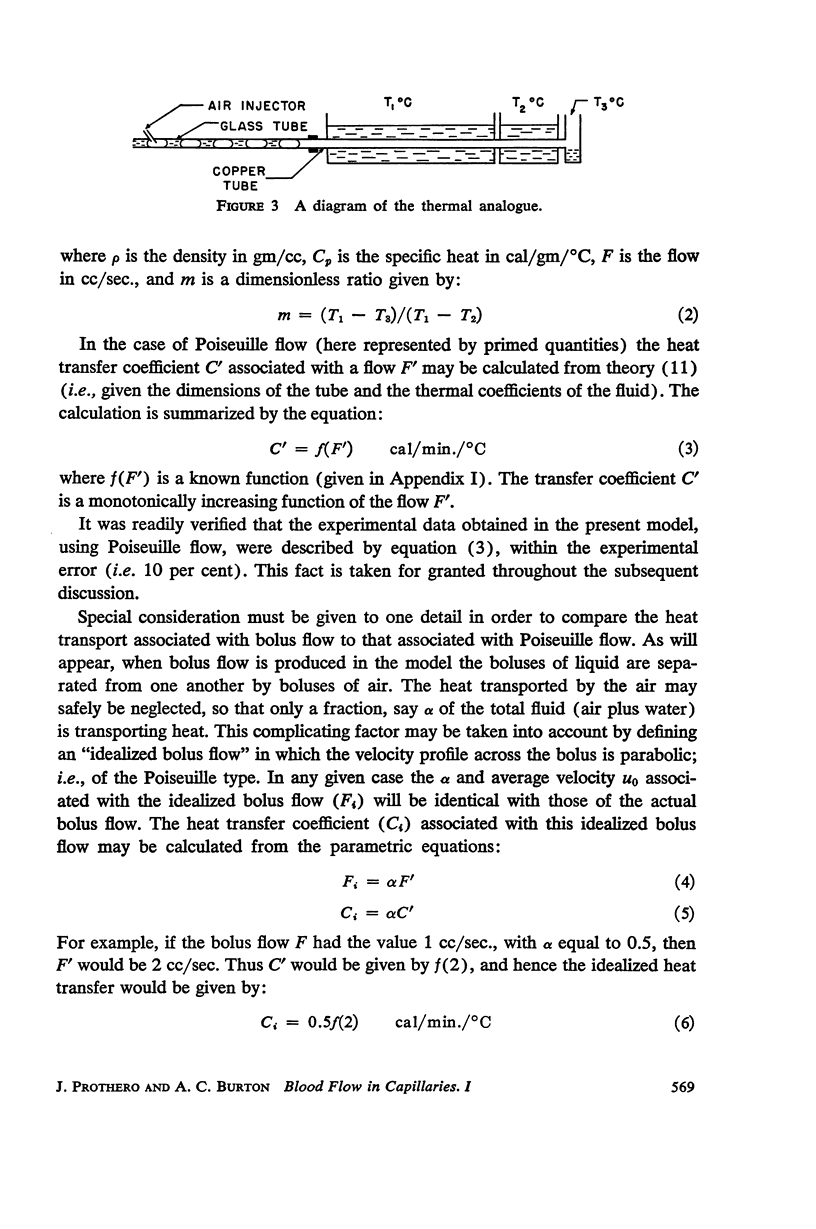
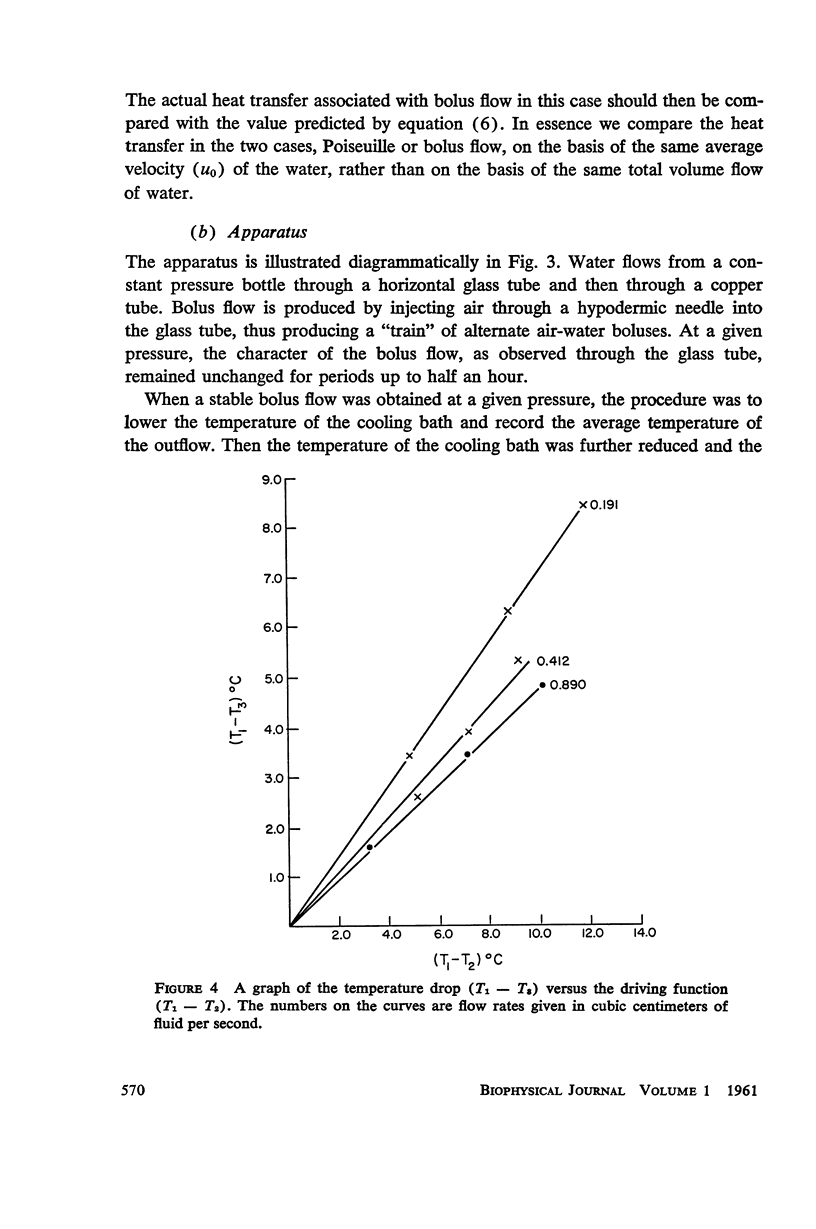
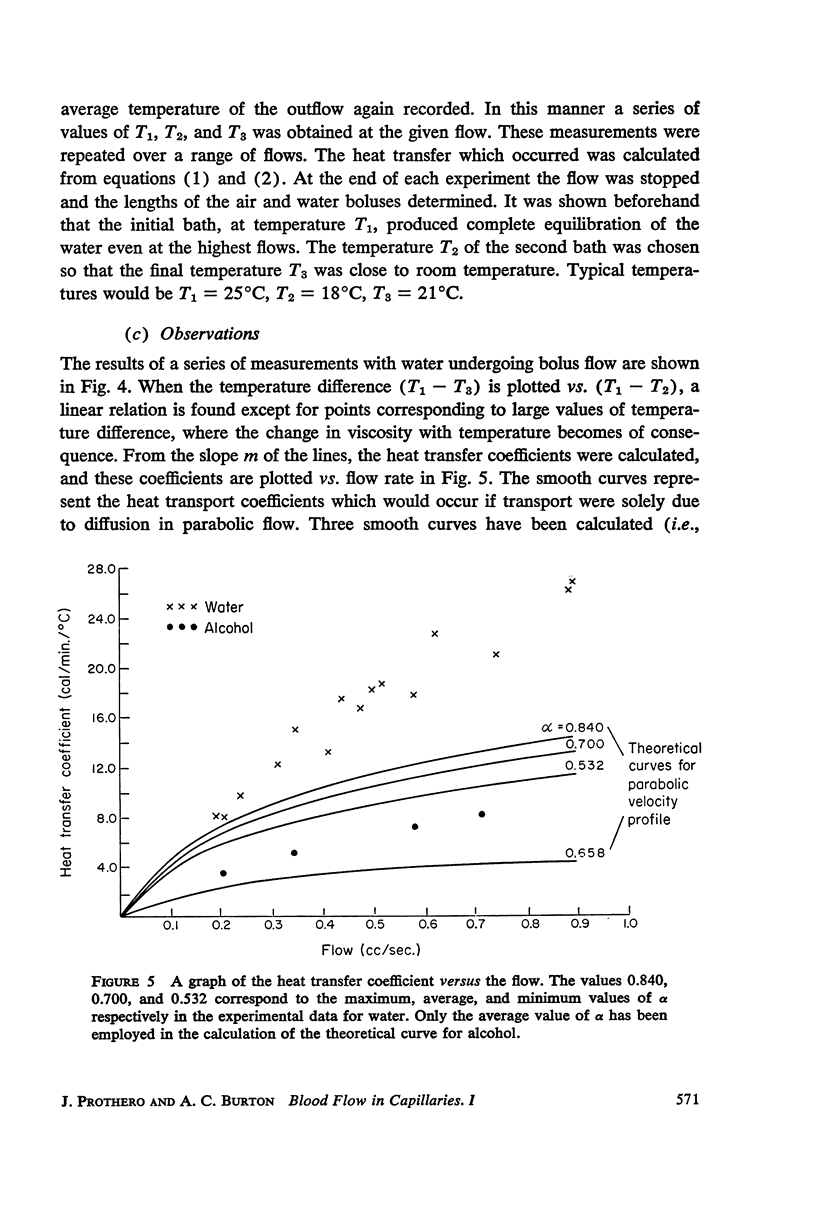
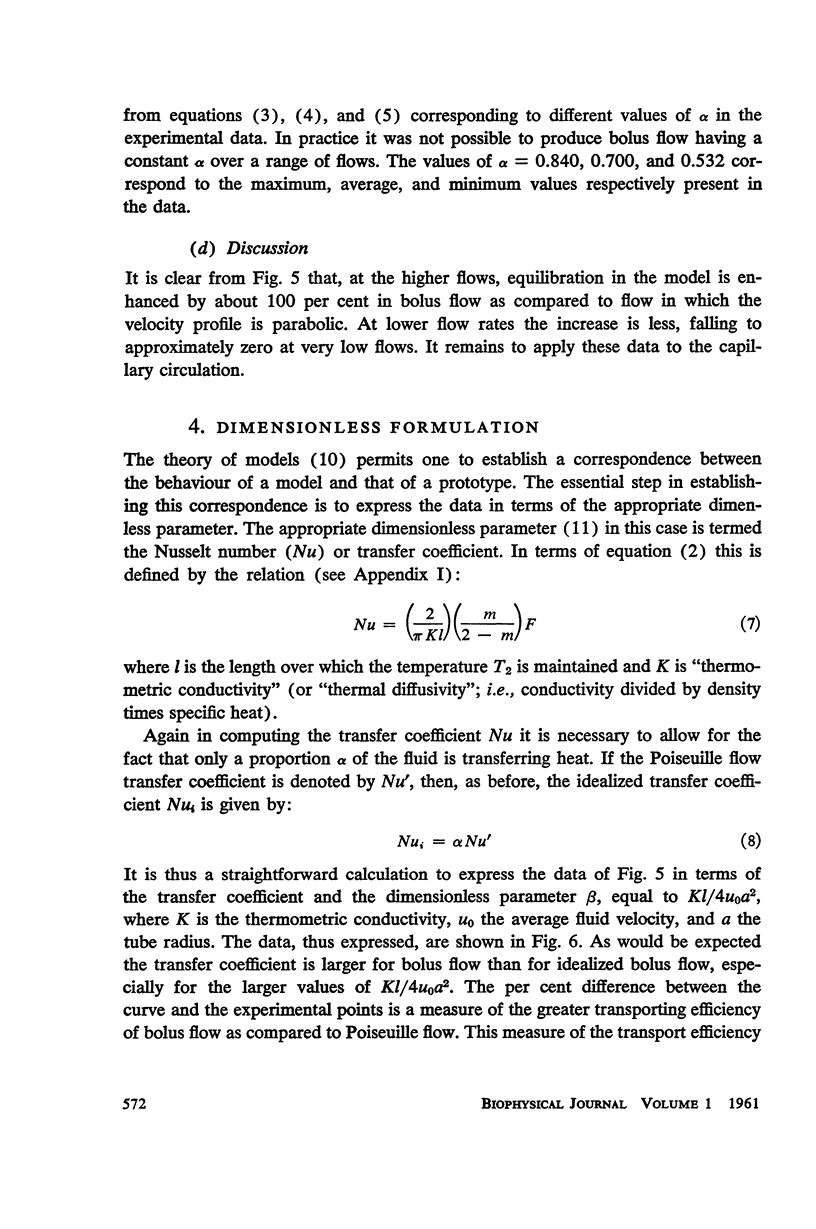
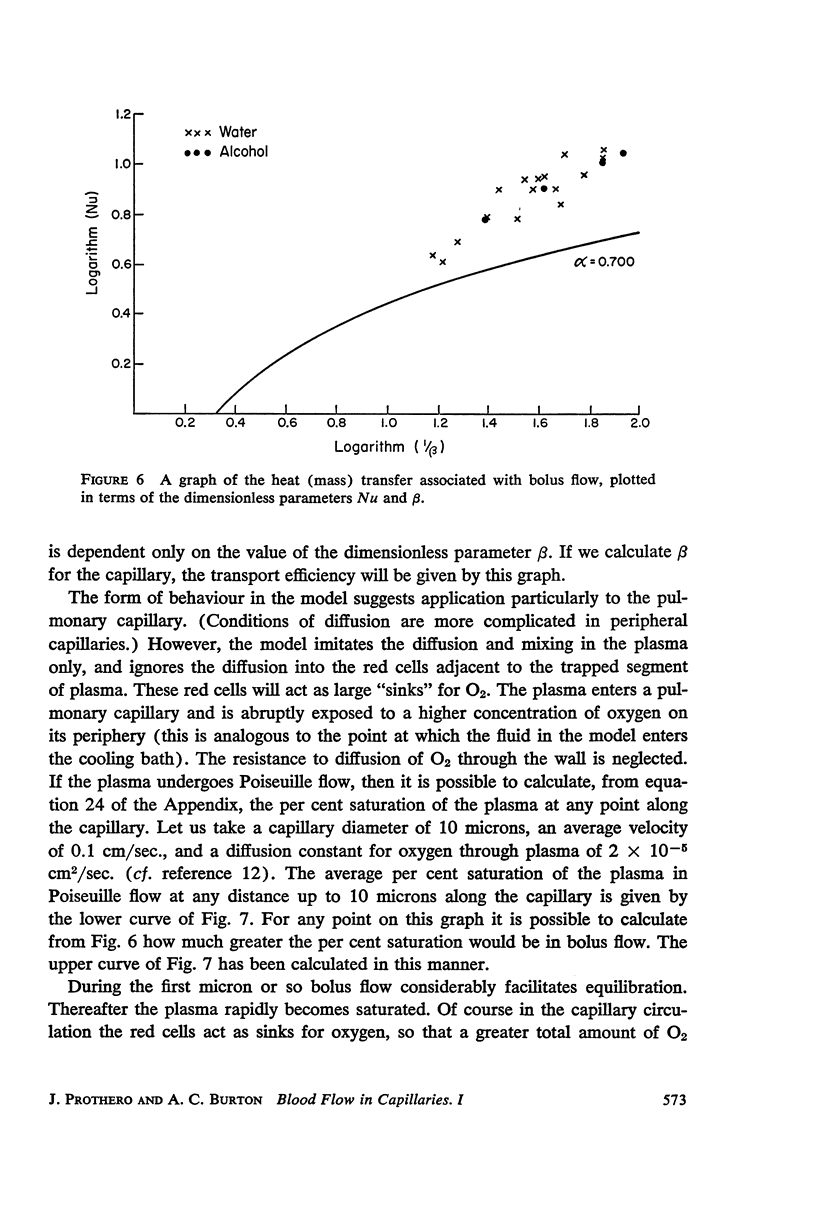
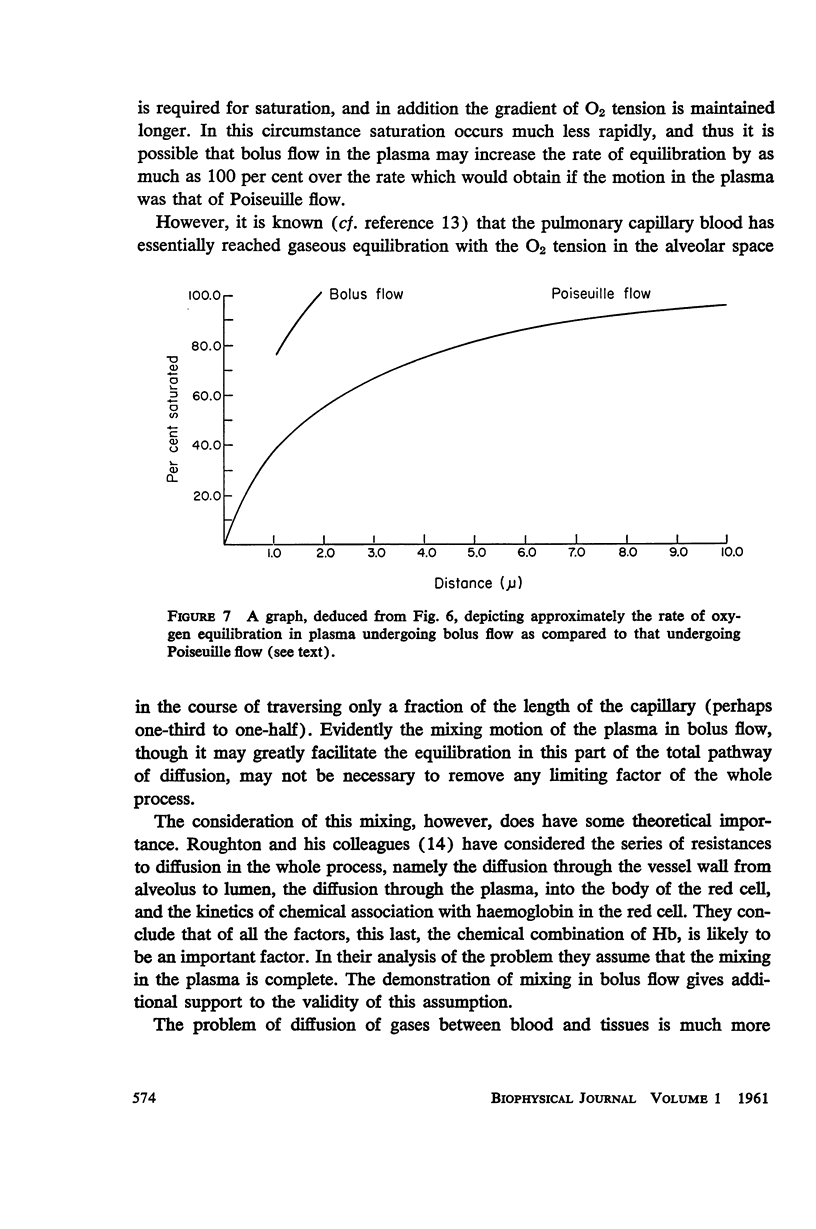
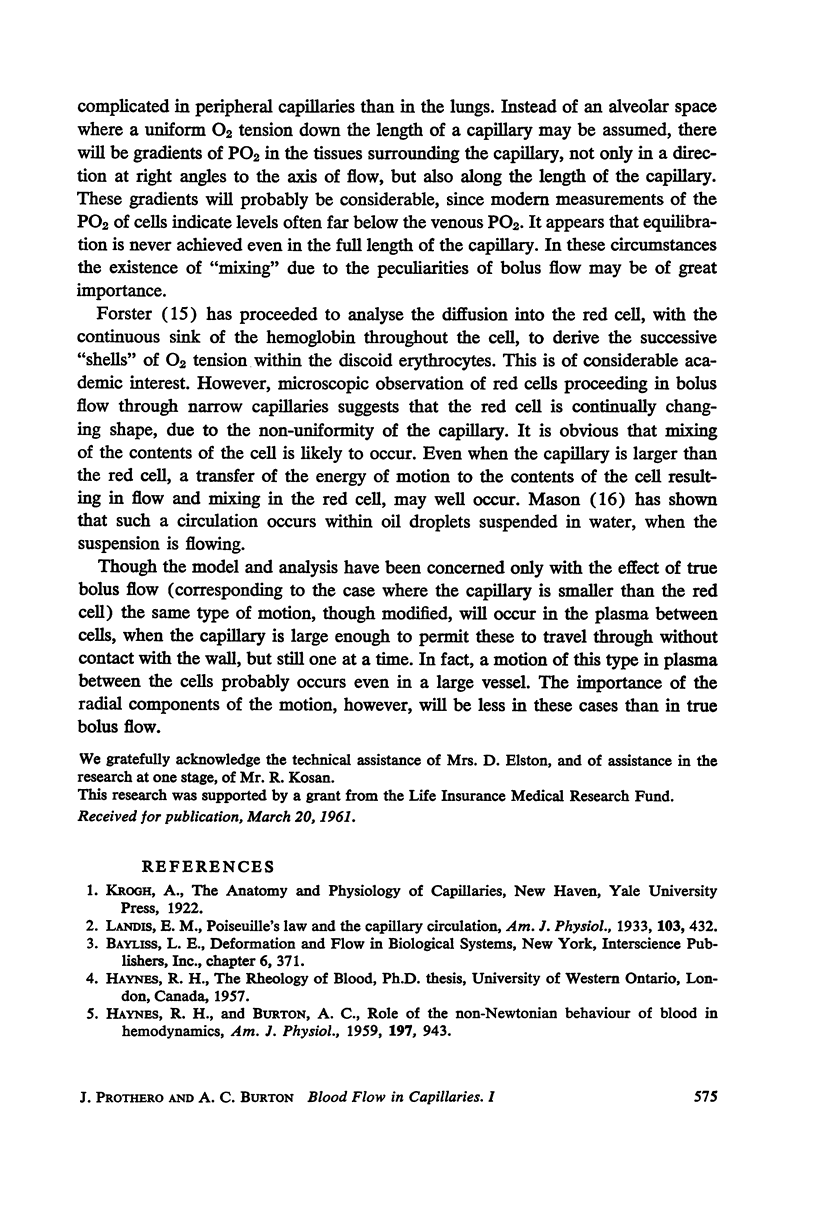
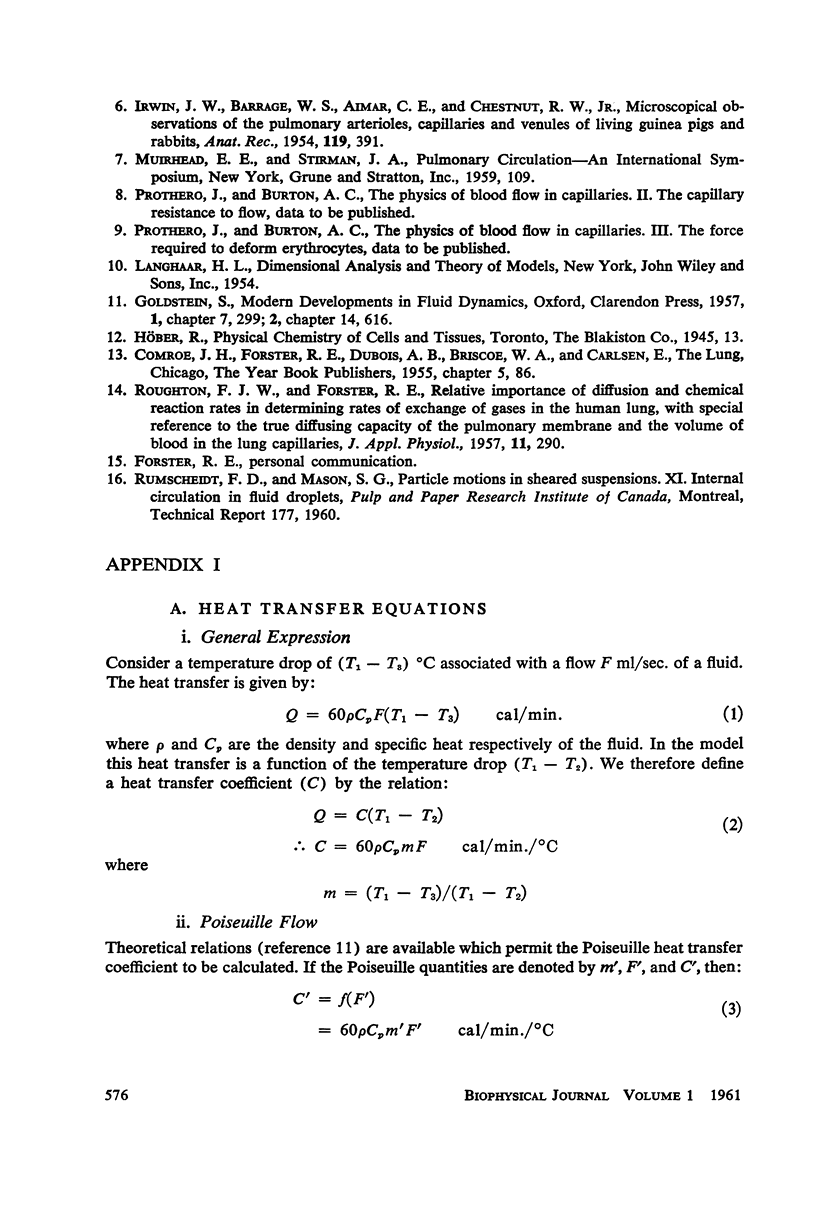
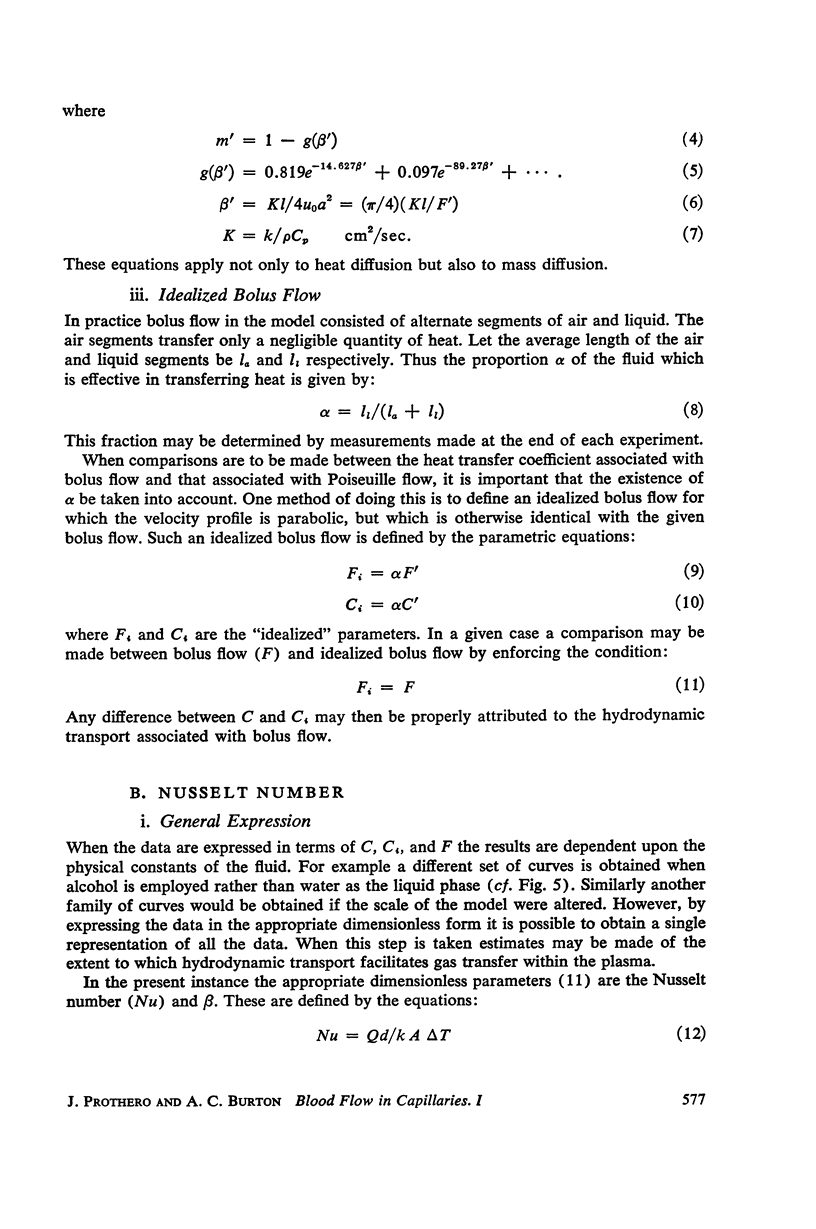
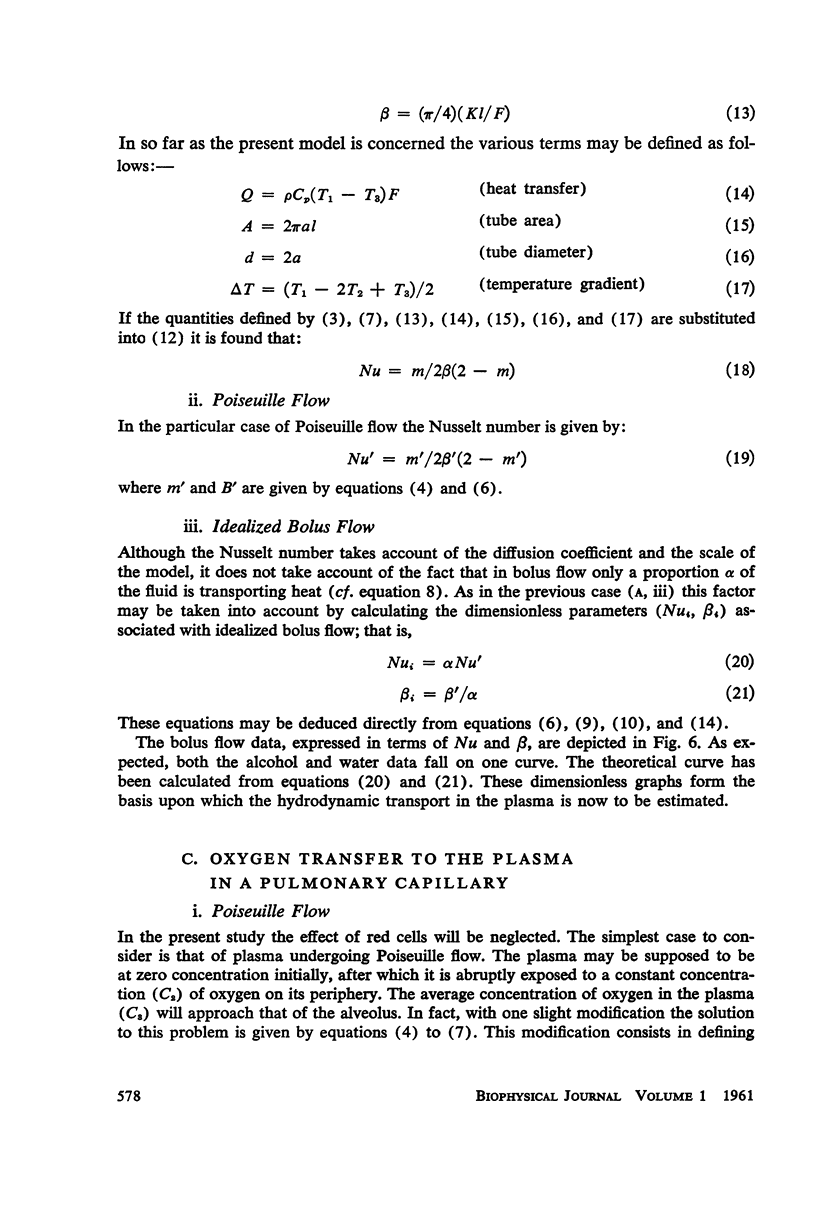
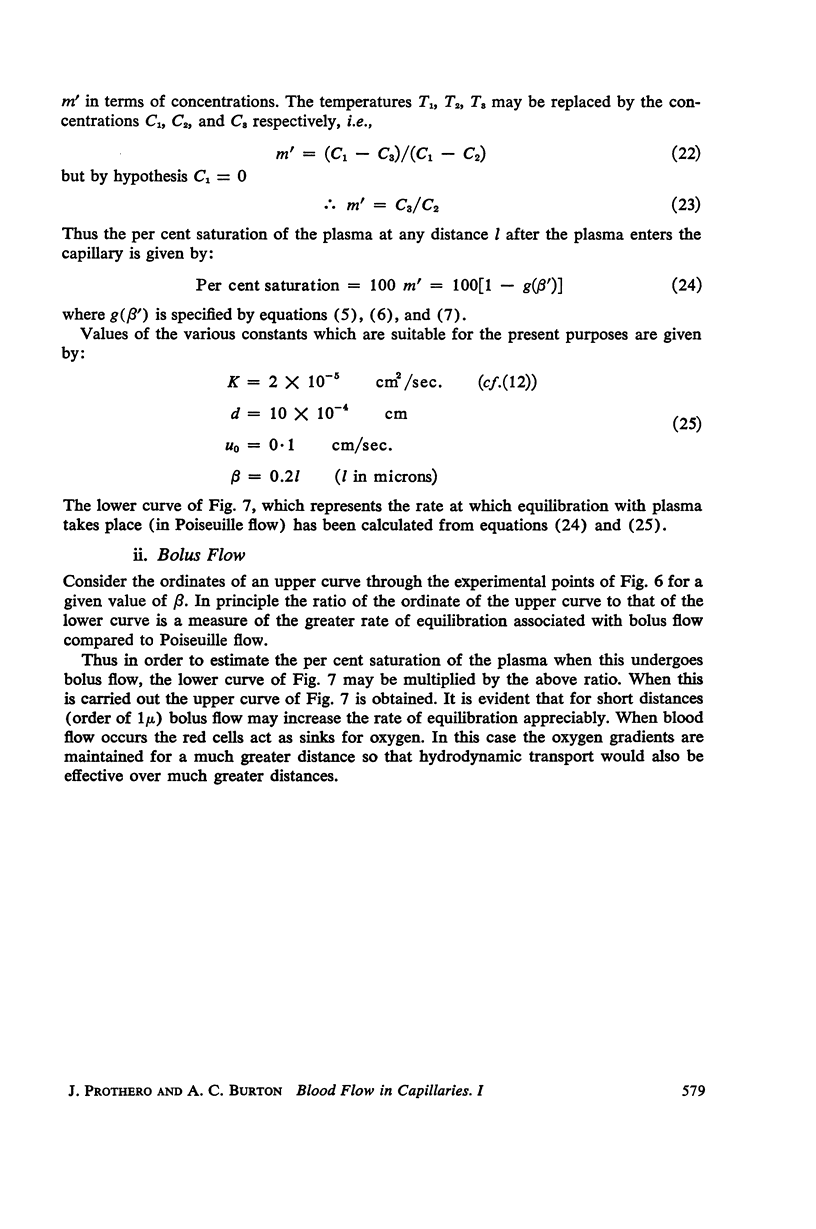
Images in this article
Selected References
These references are in PubMed. This may not be the complete list of references from this article.
- HAYNES R. H., BURTON A. C. Role of the non-Newtonian behavior of blood in hemodynamics. Am J Physiol. 1959 Nov;197:943–950. doi: 10.1152/ajplegacy.1959.197.5.943. [DOI] [PubMed] [Google Scholar]
- IRWIN J. W., BURRAGE W. S., AIMAR C. E., CHESNUT R. W., Jr Microscopical observations of the pulmonary arterioles, capillaries, and venules of living guinea pigs and rabbits. Anat Rec. 1954 Jul;119(3):391–407. doi: 10.1002/ar.1091190309. [DOI] [PubMed] [Google Scholar]
- ROUGHTON F. J., FORSTER R. E. Relative importance of diffusion and chemical reaction rates in determining rate of exchange of gases in the human lung, with special reference to true diffusing capacity of pulmonary membrane and volume of blood in the lung capillaries. J Appl Physiol. 1957 Sep;11(2):290–302. doi: 10.1152/jappl.1957.11.2.290. [DOI] [PubMed] [Google Scholar]



